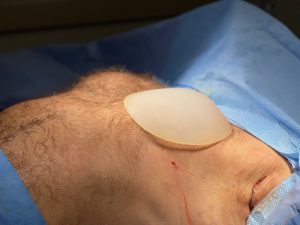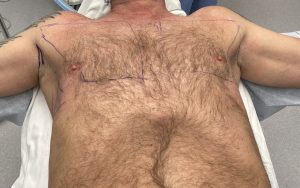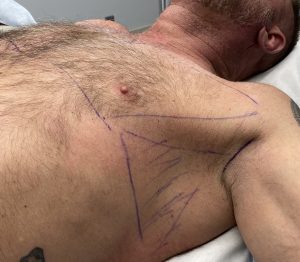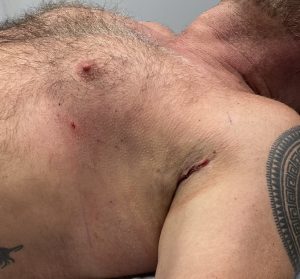Background: Pectoral implants for men are in theory the aesthetic equivalent of breast implants in women. While this is true as a method of aesthetic chest enhancement, there are numerous significant differences between them. Those differences can be traced to what the anatomic enhancement is meant to achieve. For women the end result is an enlargement of the glandular tissues above the muscle to create a soft and supple mound. Conversely in men the goal is a pure augmentation of the pectorals major muscle to increase its visible thickness/projection. It does not need to feel as soft as a breast mound.
While breast implants are typically placed under the muscle that is only done so because it lowers certain implant risks and that submuscular placement is only partial. In pectoral implants, however, the implant placement must be completely sub muscular without violation of the lateral pectoral muscle border. This keeps the the implant position ‘high and tight’ ensuring pure muscle augmentation. Keeping the incision small to place it without tearing the implant into this smaller chest pocket is aided by the use of a funnel insertion device. Because the pectoral implant is not round like a breast implant, getting the correct orientation of the implant once inside the pocket can sometimes be challenging.
When placing pectoral implants there are numerous adjunctive procedures that can be considered to the nipple-areolar complex and the chest wall around it. To improve muscular definition at the lateral pectoral border, liposuction of the chest wall at its side and up into the axilla can be very helpful in some patients. The goal is to change the area to the side of the pectoral muscle into a concavity which makes the muscle border more pronounced.
Case Study: This male was fairly muscular in his shoulders and arms but did not feel that the chest muscle matched the other proportions. Within the context of what the patient could do on his own with exercise he felt it would be more effectively and efficiently done with an implant. His pectoralis major muscle measurements were taken and an implant shape that fit them chosen His goal was a natural enhancement and not a ‘superman’ look.
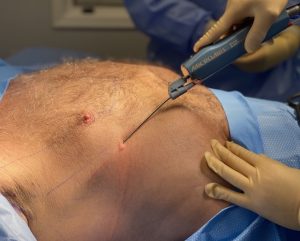


Once placed into the pocket the implant may take some maneuvering to ensure that it is both unfolded and in the correct orientation. This is never an issue with breast implants as they are round and any orientation is thus correct.
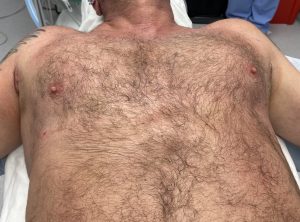
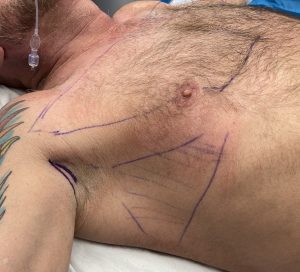
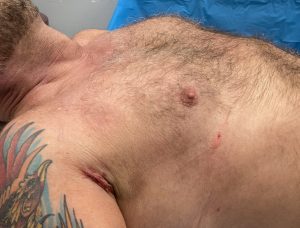
Case Highlights:
1) Pectoral implants in men area completely solid submuscular implant unlike gel breast implants that are partially submuscular in women.
2) The funnel insertion technique is an effective method for transaxillary submuscular placement through a small incision.
3) Pectoral triangle/lateral chest wall liposuction is a complement to pectoral implants which highlight the lateral pectoral muscle border.
Dr. Barry Eppley
Indianapolis, Indiana





